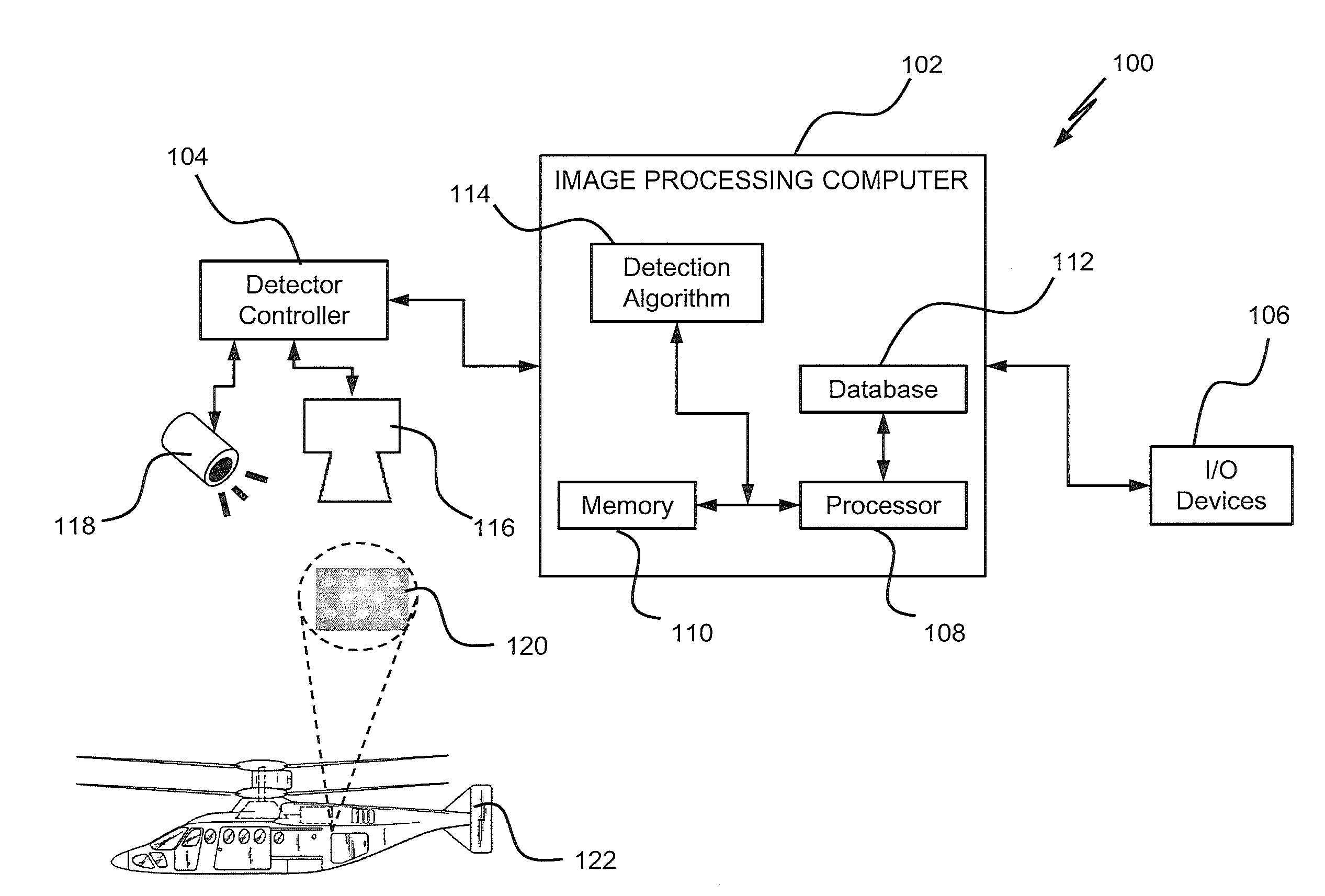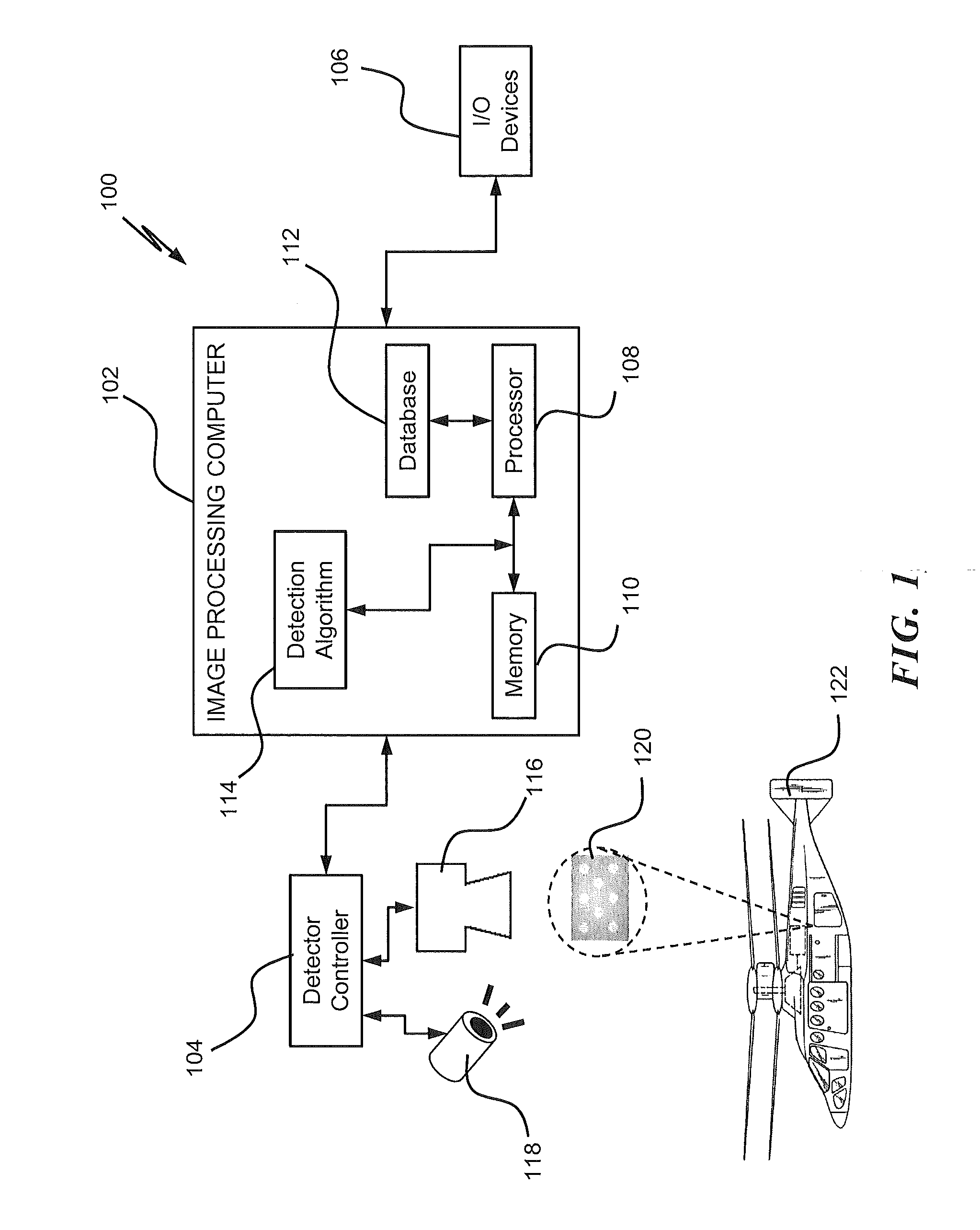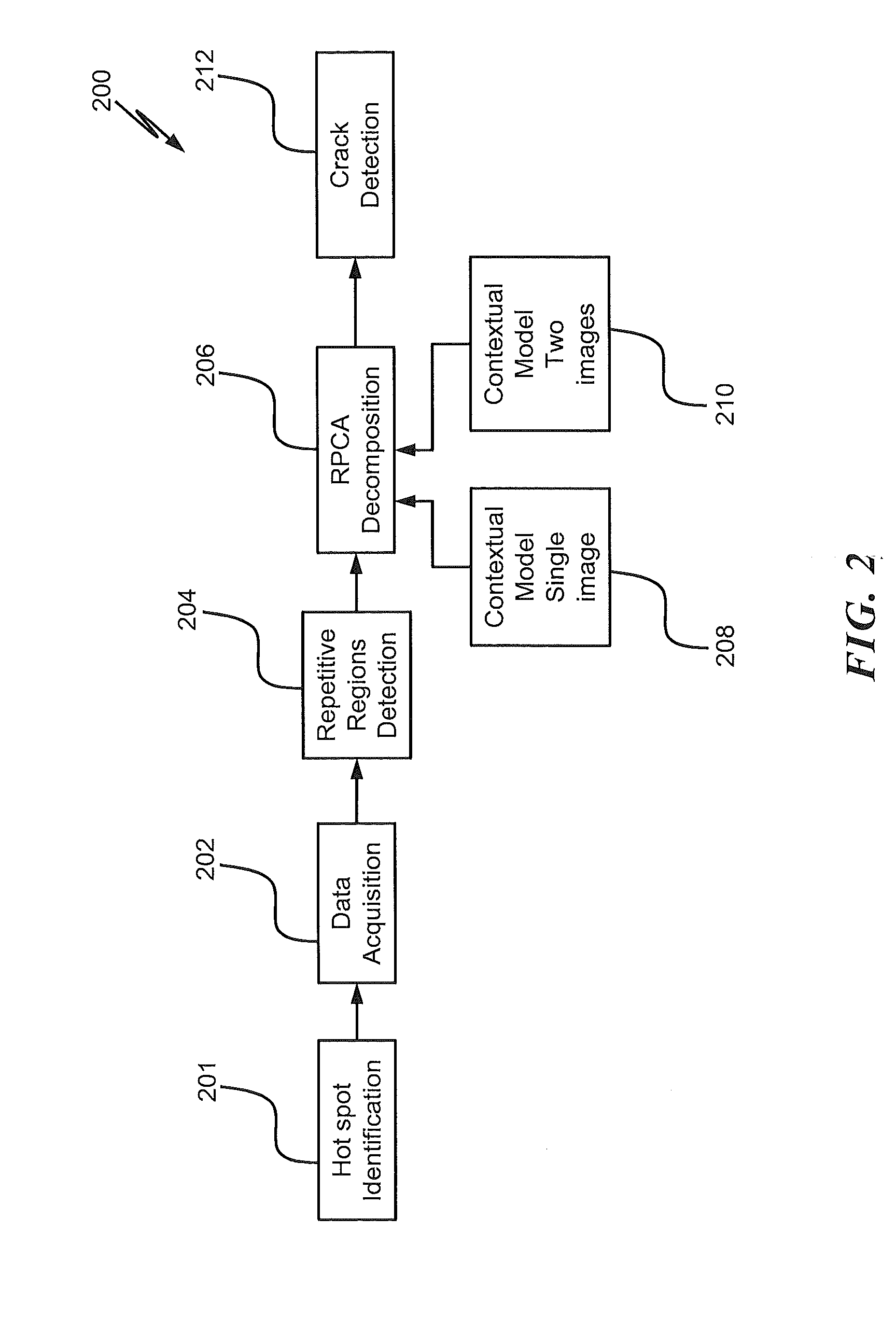Structural hot spot and critical location monitoring system and method
a monitoring system and critical location technology, applied in the field of non-destructive inspection, can solve the problems of cracks, corrosion, disbonding, cracks in aircraft structures, and inability to visual inspection, and achieve the effect of improving the ability to detect and detect cracks, and reducing the difficulty of visual inspection
- Summary
- Abstract
- Description
- Claims
- Application Information
AI Technical Summary
Benefits of technology
Problems solved by technology
Method used
Image
Examples
Embodiment Construction
[0009]Referring to the drawings, FIG. 1 illustrates a schematic block diagram of a structural hot spot and critical location monitoring system 100 (hereinafter “structural monitoring system 100”) according to an embodiment of the invention. The structural monitoring system 100 includes a crack detection and monitoring algorithm 114 (hereinafter “detection algorithm 114”) for detecting cracks or hot spots in a structural component 120 in, for example, a rotary-wing aircraft 122.
[0010]As illustrated, the structural monitoring system 100 includes an image processing computer 102, a detector controller 104, and input / output (I / O) devices 106. The image processing computer 102 may be implemented as a workstation, such as a PC or a server. The image processing computer 102 includes a memory 110 that communicates with a processor 108. The memory 110 may store a detection algorithm 114 as executable instructions that are executed by the processor 108. The executable instructions may be stor...
PUM
 Login to View More
Login to View More Abstract
Description
Claims
Application Information
 Login to View More
Login to View More - R&D
- Intellectual Property
- Life Sciences
- Materials
- Tech Scout
- Unparalleled Data Quality
- Higher Quality Content
- 60% Fewer Hallucinations
Browse by: Latest US Patents, China's latest patents, Technical Efficacy Thesaurus, Application Domain, Technology Topic, Popular Technical Reports.
© 2025 PatSnap. All rights reserved.Legal|Privacy policy|Modern Slavery Act Transparency Statement|Sitemap|About US| Contact US: help@patsnap.com



